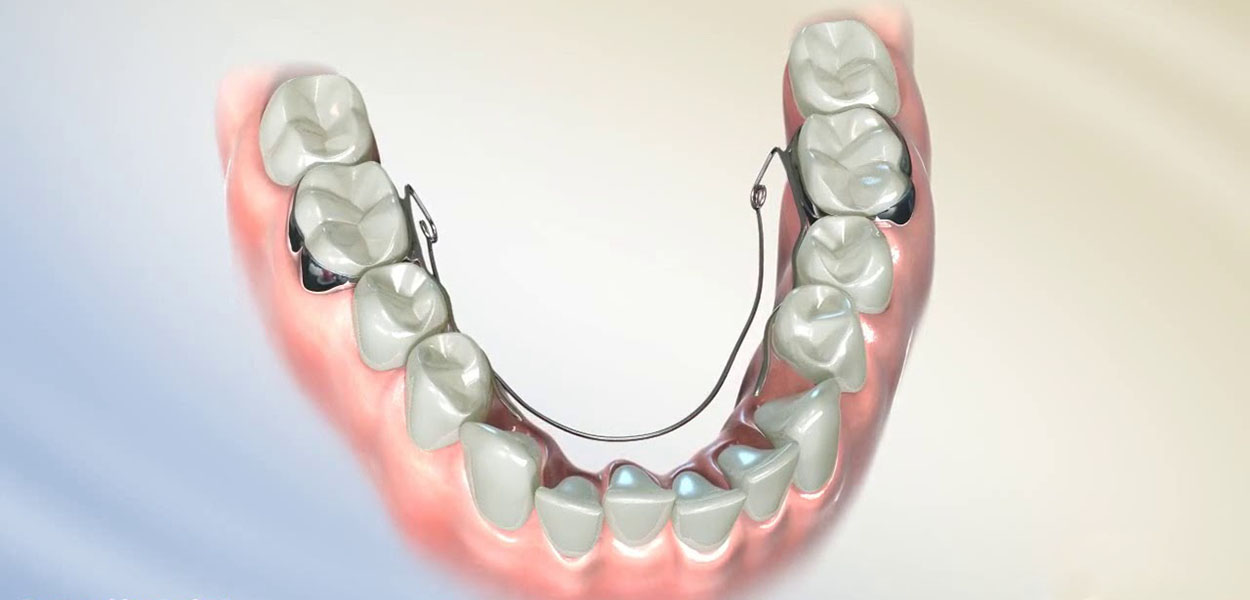What is a Lower Lingual Holding Arch?

Kenilworth, IL – Every orthodontic patient presents with a slightly different malocclusion – that is because each orthodontic issue is as individual as the patient is. But luckily for patients seeking out orthodontic treatment today, there are a variety of technologically advanced treatment options to help correct their issues. One appliance that Dr. Michael Stosich uses is the lower lingual holding arch.
“I treat patients of all ages and all degrees of malocclusions,” says Dr. Stosich. “Because of that, I have to ensure I have all of the tools necessary to provide the most healthy, stable bites to every patient. Lower lingual holding arches are excellent for patients in the first phase of two-phase treatment who present with severe crowding.”
The lower lingual holding arch is a space maintaining appliance. The LHHA is attached to the lower first molars and connected by a wire that runs along the inside of the lower teeth. It works to prevent lower molars from moving forward, where they could block permanent teeth from erupting properly.
The LLHA is most commonly used in children who have crowding issues, or who have lost their baby teeth prematurely. It will remain in place until all of the adult teeth have erupted.
In addition to being a space maintaining device, the LLHA can also act as an anchor for elastics, as well as to stabilize and support molars. The lower lingual holding arch is effective in maintaining the proper leeway space because baby molars are wider than the permanent teeth that will replace them.
It is a relatively simple device that can do a lot to create an ideal smile and bite. Two stainless steel bands are attached to the lower first molars using an orthodontic adhesive. The bands are then connected by a stainless steel wire that runs along the lingual side of the teeth. Because the wire is on the tongue side of the teeth, the wire is felt by the patient. However, there is not pressure or discomfort associated with the appliance as the LLHA is used passively.
Each LLHA is custom made for the individual patient, and because of its placement, it isn’t easily visible to others. There is no pain associated with the appliance, but with anything, there will be an adjustment period. Patients should expect:
- Altered speech in the first few days. Because the tongue now has a new object to deal with when speaking, it will take a few days to get used to speaking with the LLHA in place. Speak out loud as much as possible to allow yourself to get used to it more quickly.
- Increased saliva production. When your mouth senses something new, it may go into overdrive in producing saliva. This will subside in a few days.
- Minor irritation. The soft tissues of your mouth may become slightly irritated from the appliance. You can rinse with warm saltwater or use orthodontic wax over any area that may be causing discomfort.
The lower lingual holding arch requires little maintenance, but patients should follow all care guidelines given to them. Patients should avoid sticky, crunchy, hard or chewy foods that could pull on the wire or loosen the bands. Patients should also avoid playing with the wire with their tongue or picking at the wire or bands.
It is recommended that children visit an orthodontist for the first time around the age of seven. While treatment is not always indicated at this time, Dr. Stosich can begin monitoring your child’s smile progress and then begin treatment at the time it will have the most impact. The use of a lower lingual holding arch may be able to help prevent more serious crowding issues from arising later, and can make additional treatment more efficient and effective.
The LLHA is a very simple device, but it can do a very big job. Think about the LLHA like a retaining wall – its purpose is to prevent the molars from shifting forward, and thereby causing any further crowding issues. It is an important orthodontic tool that can be utilized to create beautiful, straight and functional smiles.


